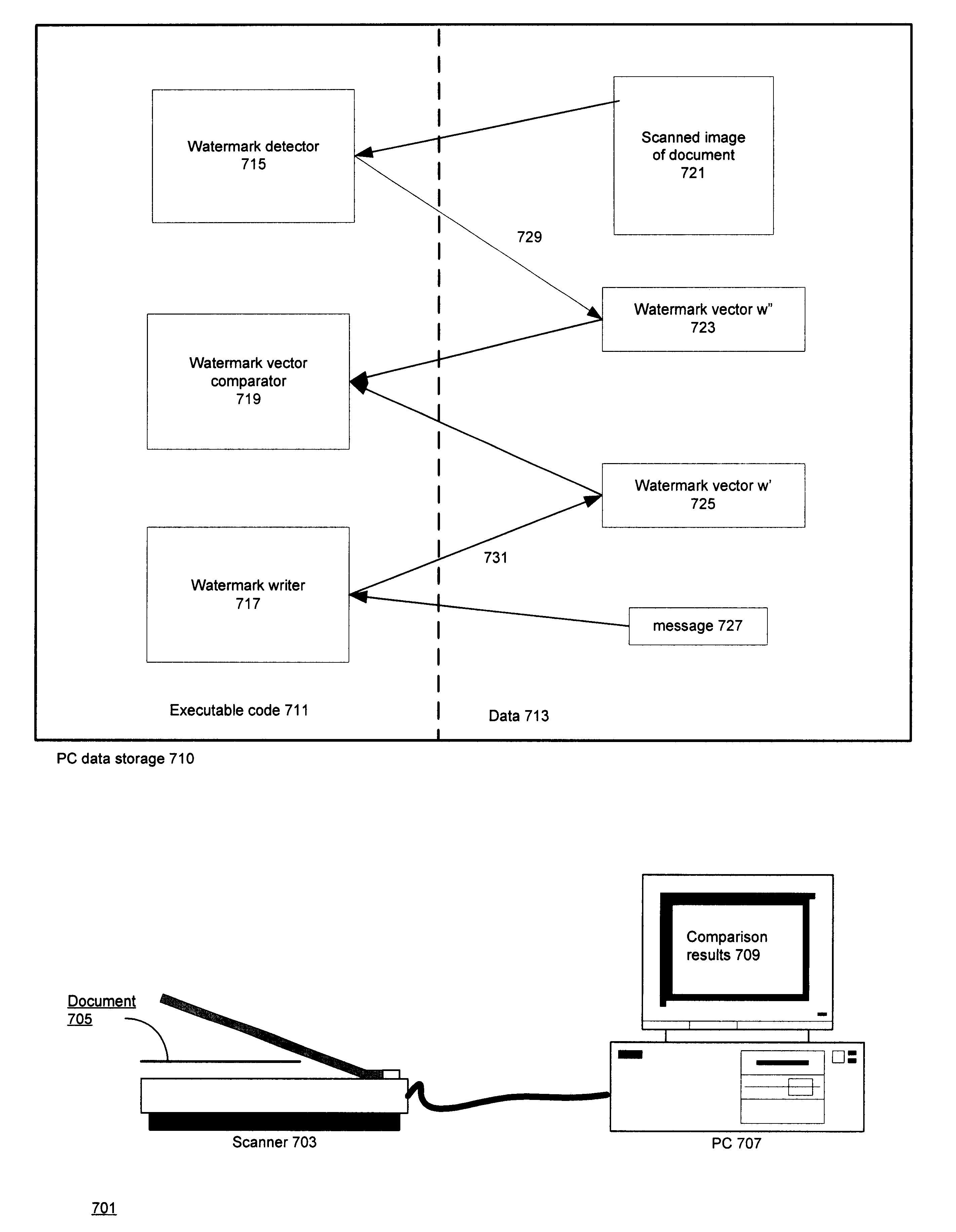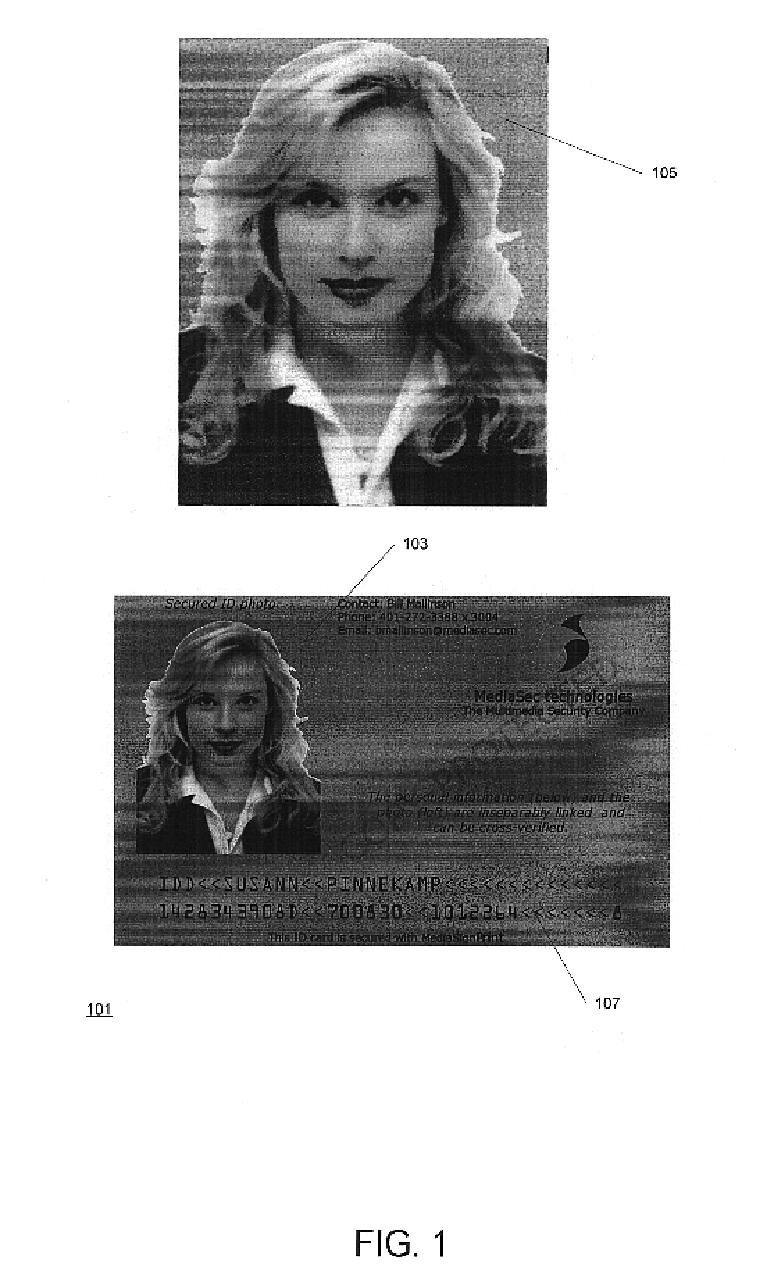Apparatus and methods for improving detection of watermarks in content that has undergone a lossy transformation
a technology of lossy transformation and watermarks, applied in image watermarking, digital transmission, instruments, etc., can solve the problems of lossy transformation, lossy production of analog forms from digital representations, and further loss of information,
- Summary
- Abstract
- Description
- Claims
- Application Information
AI Technical Summary
Problems solved by technology
Method used
Image
Examples
example 2
has been captured by a digital camera and contains a watermark with the camera number, date, etc. It is known at which date or from which camera the picture was taken.
More generally, for these applications and others, the additional information may make it possible to determine that a specific message, or one of a subset of messages (e.g. we know the date the picture was taken but not which camera number), is embedded as a watermark in the image.
Exemplary Embodiments of the Techniques
A secured document
In one application, a secured document--e.g. an ID card or passport--has the following characteristics:
The whole document or a part of it contains a watermark that is made using watermark information that in turn was made using a certain message
There is some information available that is unique to the document and / or to its possessor: personal information, an identification number, etc. This information can be in any form: textual, in a bar code, encrypted, etc. It may be contained in ...
PUM
 Login to View More
Login to View More Abstract
Description
Claims
Application Information
 Login to View More
Login to View More - R&D
- Intellectual Property
- Life Sciences
- Materials
- Tech Scout
- Unparalleled Data Quality
- Higher Quality Content
- 60% Fewer Hallucinations
Browse by: Latest US Patents, China's latest patents, Technical Efficacy Thesaurus, Application Domain, Technology Topic, Popular Technical Reports.
© 2025 PatSnap. All rights reserved.Legal|Privacy policy|Modern Slavery Act Transparency Statement|Sitemap|About US| Contact US: help@patsnap.com



